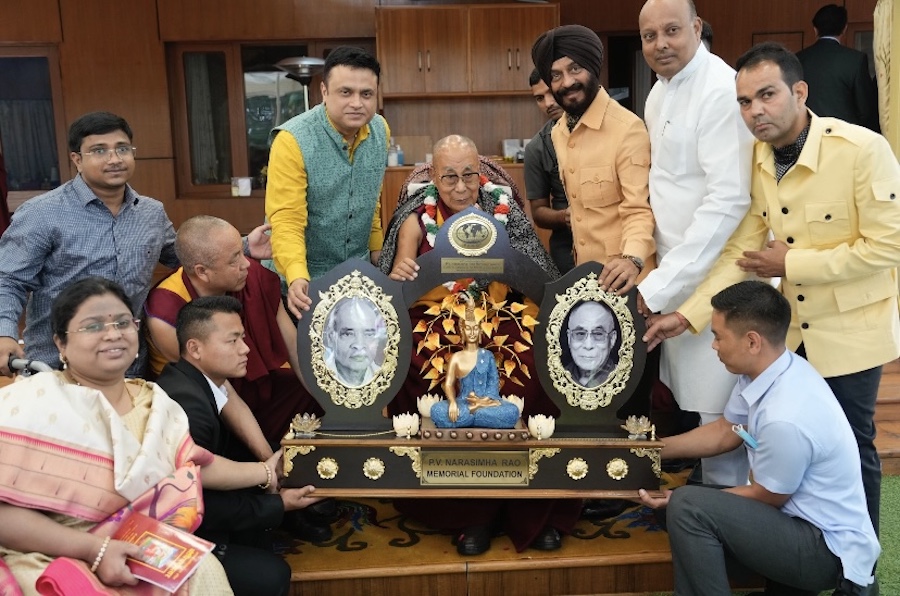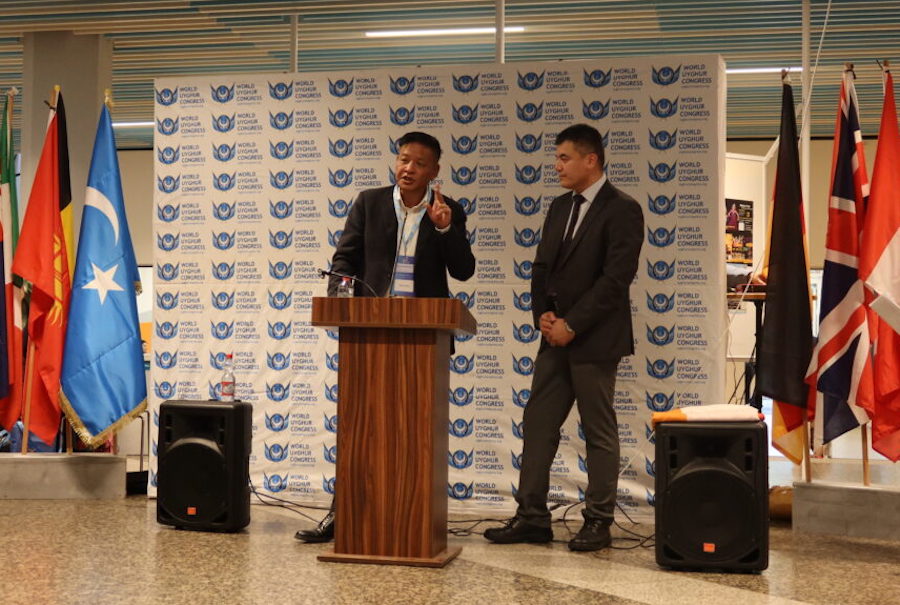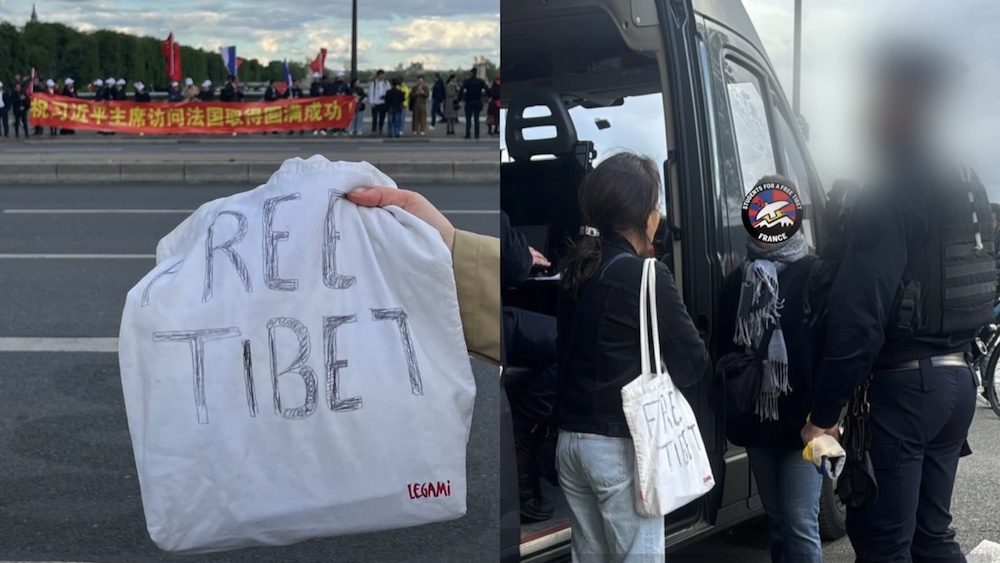Modernization threatens Lhasa, Tibet
BY JO and KEN YELLIS
Special to The Journal
High on the Tibetan Plateau, the city of Lhasa is threatened with submersion, but not by its neighboring river.
With the large influx of Han Chinese over the past several decades, the character of this once exotic and isolated city is changing rapidly. Many of the original buildings have been destroyed, and one has to wonder if the Dalai Lama would recognize his home, should he ever have the opportunity to return.
Although new hotels, shops and restaurants are creating a more tourist-friendly environment, these very “improvements” may be accelerating the erosion of indigenous Tibetan culture. Ironically, the recent Chinese push for modernization may, in the end, prove just as detrimental to Tibetan traditions as decades of political and religious repression.
Nevertheless, Tibet is still a remarkable place to visit. We intentionally chose a China tour — one offered by Overseas Adventure Travel — that included a stay in Lhasa. It turned out to be, quite literally, one of the brightest spots on our trip.
‘Tashi delek’
Brilliant October sunshine and a deep blue sky greeted our arrival at Gongkar airport about 60 miles southeast of Lhasa, bringing welcome relief from the damp and dreary weather we had experienced in Beijing and Xian. By late morning, it was so warm we began to shed our jackets and to wonder why we had brought our winter clothing for this part of the trip.
Our local guide, a handsome young Tibetan named Tashi, presented us with the white ceremonial scarves customarily given to visitors as a sign of welcome. He also taught us the traditional greeting, “Tashi delek,” the Tibetan way of saying “May the force be with you.”
The 90-minute drive to Lhasa gave us our best glimpse of the countryside outside the city. The two-lane road follows the turquoise waters of the Yarlung Tsangpo River, the largest in Tibet and, with an average altitude of more than 13,000 feet, the highest in the world. The landscape is austere, yet somehow beautiful, framed by steep and barren-looking mountains with distant views of snow-capped peaks. It reminded us of the Bolivian altiplano.
Golden poplars lined the roadway, their dazzling fall color adding a vibrant touch to the muted tones of the land. Prayer flags fluttered from rooftop poles and ropes were strung across the river and road. Cinderblock houses with black-rimmed windows peered at us from the roadside like pale, sad faces with kohl-lined eyes.
We saw a farmer driving his yak-powered plow, a nomad sitting beside his yak-hair tent, and fishermen working on their yak-skin boat. Even today, the yak plays an important and multifaceted role in the life of many Tibetans.
Before entering Lhasa, our party of 15 Americans, including several grandparents, made a brief stop at a school for orphans, where we were greeted by a group of beautiful smiling children. After singing a song of welcome, they took each of us by the hand and escorted us to their gaily decorated dormitory and classroom. So charming was the experience that someone asked about the possibility of adoption. Unfortunately, we were told, that would be very difficult to arrange.
When we arrived at our hotel, we were advised to rest for a few hours to allow our bodies to adjust to the 12,000-foot altitude. Those of us on Diamox, the most commonly prescribed medication for the prevention of altitude sickness, fared pretty well. But two members of our group, who were unable to take the drug because of a sulfa allergy, required medical attention. Fortunately, most high-altitude hotels have bottled oxygen on hand and a doctor on call. By the next day, our companions had fully recovered, although we all suffered a little from the extreme dryness of the air.
While a certain amount of respiratory discomfort is par for the course, Tibet’s arid climate can lead to more unusual — and even dangerous — problems for the unsuspecting traveler. In Seven Years in Tibet, for example, Heinrich Harrer tells of matches in his backpack rubbing together and catching fire. The upside, of course, is that things dry very quickly and clothing washed at night is ready to wear by morning.
With a population of just under 200,000, Lhasa is really two cities, one Han Chinese and the other Tibetan. As the influx of Chinese continues, they will soon outnumber the Tibetans, if they don’t already.
Almost anywhere
The Chinese quarter includes many of the newer hotels and commercial establishments, most run by Han immigrants, among the world’s most industrious capitalists. The Tibet Hotel, where we were staying, had all the modern conveniences of other Chinese hotels, save for English-language channels on the TV. Were it not for the telltale aroma, smoky and slightly pungent, of yak-dung fires at night, we could have been almost anywhere.
The Chinese drive for uniformity — and conformity — even expresses itself in a one-size-fits-all policy regarding time. The entire country, the third largest in the world, has only one time zone! Thus, on our way to dinner in the Tibetan quarter, it was still light enough to give us our first glimpse of the Potala Palace, winter residence of the Dalai Lama and former seat of the Tibetan government.
With 13 floors and more than 1,000 rooms, the Potala is a truly imposing structure, both inside and out. But while the outside is bright and colorful with its red and white walls and shiny golden roofs, the interior, as we discovered the next day, is somber and dimly lit. The narrow corridors and stairs, the slightly rancid smell of yak-butter lamps, and the overpowering aroma of incense make for a very intense and somewhat claustrophobic experience. No wonder the current Dalai Lama, as a youth, is reported to have spent his happiest hours on the roof enjoying the view with his telescope and looking forward to his annual return to the Norbulingka, his beloved summer palace and gardens on the other side of town.
At the Tibet Lhasa Kitchen, we had one of the best meals on our entire trip. This funky little restaurant serves a variety of Chinese, Nepalese and Indian dishes, including curried yak, our first of many opportunities to sample this local delicacy. Like beef, which it vaguely resembles, yak meat can be prepared in any number of ways, so we weren’t at all surprised later when yak burgers appeared as the main course at our last supper in Lhasa.
The following day, on our tour of the Potala, we encountered a monk who did something very revealing. Learning we were Americans, he took a couple of us aside and pointed to two of the many pieces of paper money visitors from all over the world have stuck to the walls. The one on the left, with beautiful Sanskrit-like writing, was Tibet’s former currency, he told us, while the one on the right, with a picture of Chairman Mao, was “what we’ve been using since 1959.” In Tibet, unlike the other parts of China we had visited, people remain very guarded in their speech. Yet they find subtle ways to let you know exactly what they’re feeling.
At the Sera Monastery just north of town, we saw, and heard, a sea of red-clad bodies engaged in raucous, almost violent activity. It was a group of monks practicing their debating skills. To a western eye, their emphatic gestures looked more like martial art than theological dialog. We were told that Sera used to house more than 5,000 monks, but now their numbers have dwindled to a mere 600.
A curious thing happened there as well. A Tibetan woman accidentally bumped into one of the people in our group. Rather than apologize, she stuck out her tongue. To the western mind, this might seem like adding insult to injury. But, in fact, it was an act of humility and the Tibetan way of saying “No harm intended.”
At Lhasa’s Jokhang Temple, one of the most sacred sites in Tibet, we found pilgrims prostrating themselves on the pavement outside. Others showed their devotion by spinning the rows of big brass prayer wheels as they made the traditional clockwise circuit (“circumambulation”) around the temple. Those of us less spiritually inclined headed for the craft stalls that line the bustling Barkhor marketplace nearby.
No visit to Tibet would be complete without the customary cup of yak-butter tea, which we finally had a chance to sample during a brief visit to a home in the Tibetan quarter. Its cheesy flavor, while not exactly revolting, is definitely an acquired taste.
Striking similarities
In many ways, Lhasa has the look and feel of a frontier town in the American west, with the Chinese assuming the role of the white man and the Tibetans, with their tanned faces, high cheek bones, and colorful turquoise and coral jewelry, playing the part of native Americans. In a supporting role, the yak takes the place of the buffalo, and the mandalas — the sacred art of Tibetan monks created out of yak butter or sand — stand in for the sand paintings of the Navajo shaman. These striking similarities become even more poignant when you consider that Tibet’s indigenous peoples, like our own, may soon become a minority in their own land.
During some free time on our last day, we visited the new Tibet Museum, opened in 1999 to commemorate the 50th anniversary of the People’s Republic of China and the 40th anniversary of the “reforms” that followed the “peaceful liberation” of Tibet in 1951. While the museum houses an excellent collection of Tibetan arts and crafts, it also offers a decidedly Marxist take on Tibetan history (including, believe it or not, the Paleolithic Era), a perspective we had not encountered anywhere else in China.
Some people suspect that China’s leaders would like to turn Tibet into a living history museum, with just enough local character to attract and satisfy tourists, but not enough to threaten the status quo. Others, like ourselves, are afraid they already have.
If you go
While travel to China is still considered safe in spite of the war with Iraq, the Centers for Disease Control and World Health Organization have issued advisories related to the outbreak of SARS (Severe Acute Respiratory Syndrome) in Asia. The CDC recommends postponement of all non-essential travel to Hong Kong and mainland China until further notice, while WHO’s advisory applies only to Hong Kong and neighboring Guangdong Province. Updates will be posted on their websites at www.cdc.gov and www.who.int.
Travel in Tibet has always been restricted, but now it’s the Chinese who call the shots. A special permit is required, and the rules are both complex and subject to change at a moment’s notice. So the best thing to do is join a tour.
Several major U.S.-based operators — Overseas Adventure Travel (www.oattravel.com), Globus (www.globusandcosmos.com) and General Tours (www.generaltours.com ) — offer 19- to 22-day China tours that include a three-day stay in Tibet. More specialized outfits like U.S.-based China Travel Adventures (www.china-tours.com), Mountain Sobek Travel (www.mtsobek.com) and the China-based China-Tibet Travel Service (www.tibet-tours.com) offer more extensive itineraries.
Current information on the situation in Tibet, including travel advice, can be found at Tibet Online (www.tibet.org), the website of the International Campaign for Tibet.
A “must read” for any traveler is Heinrich Harrer’s Seven Years in Tibet — an extraordinary and poignant account of the author’s adventures in this ancient and beautiful land just as its isolation from the modern world was about to come to an abrupt and brutal end.
Jo and Ken Yellis live in Newport, where he is director of the museum at the International Tennis Hall of Fame.









